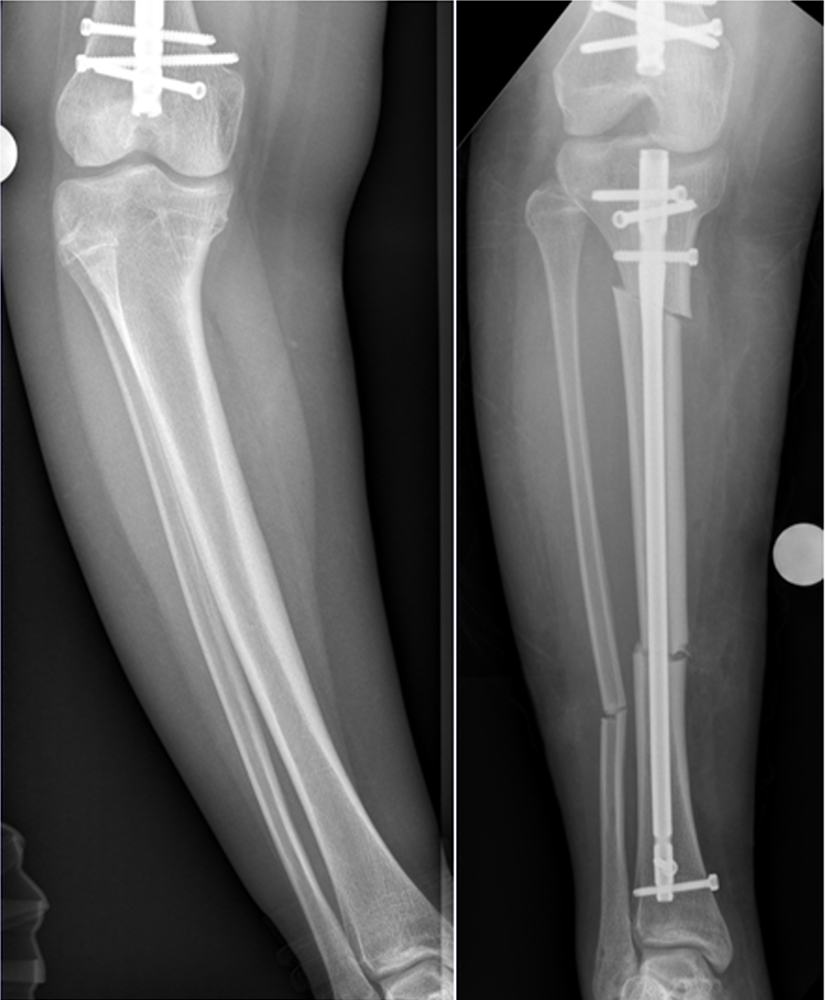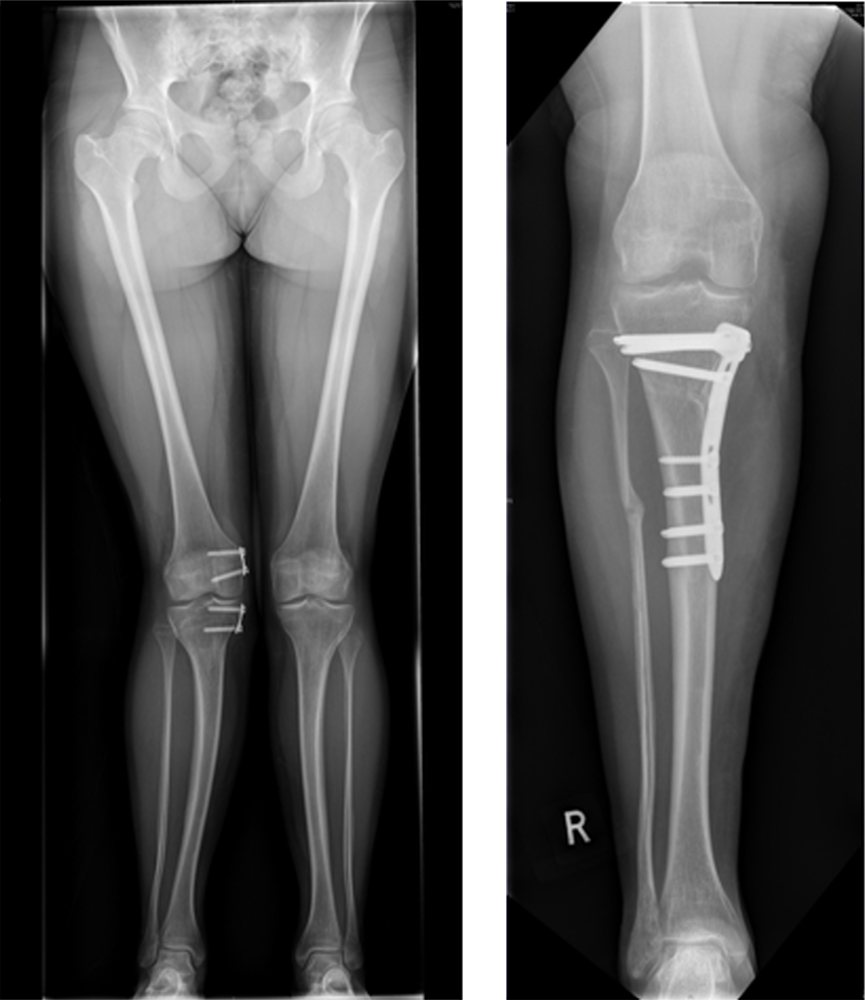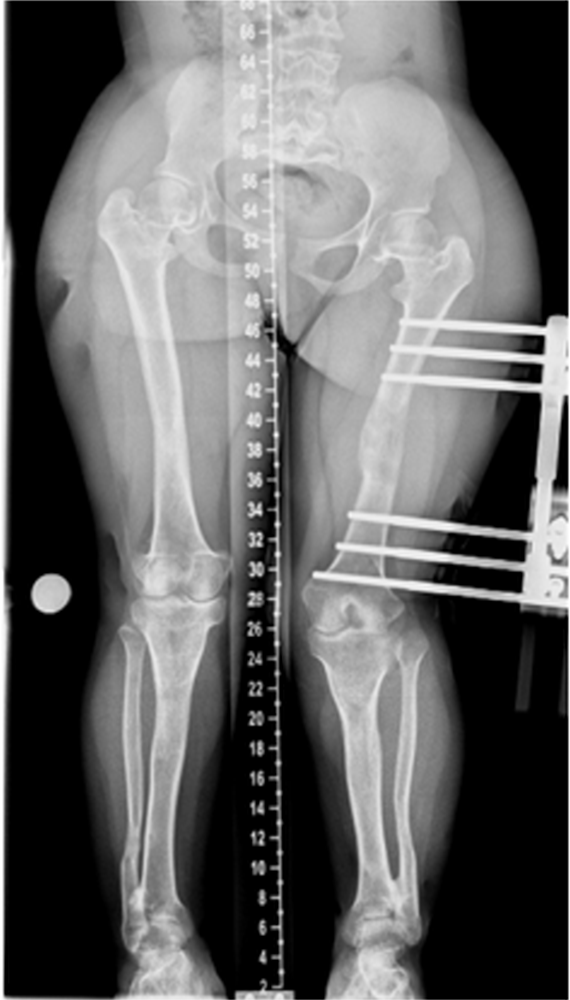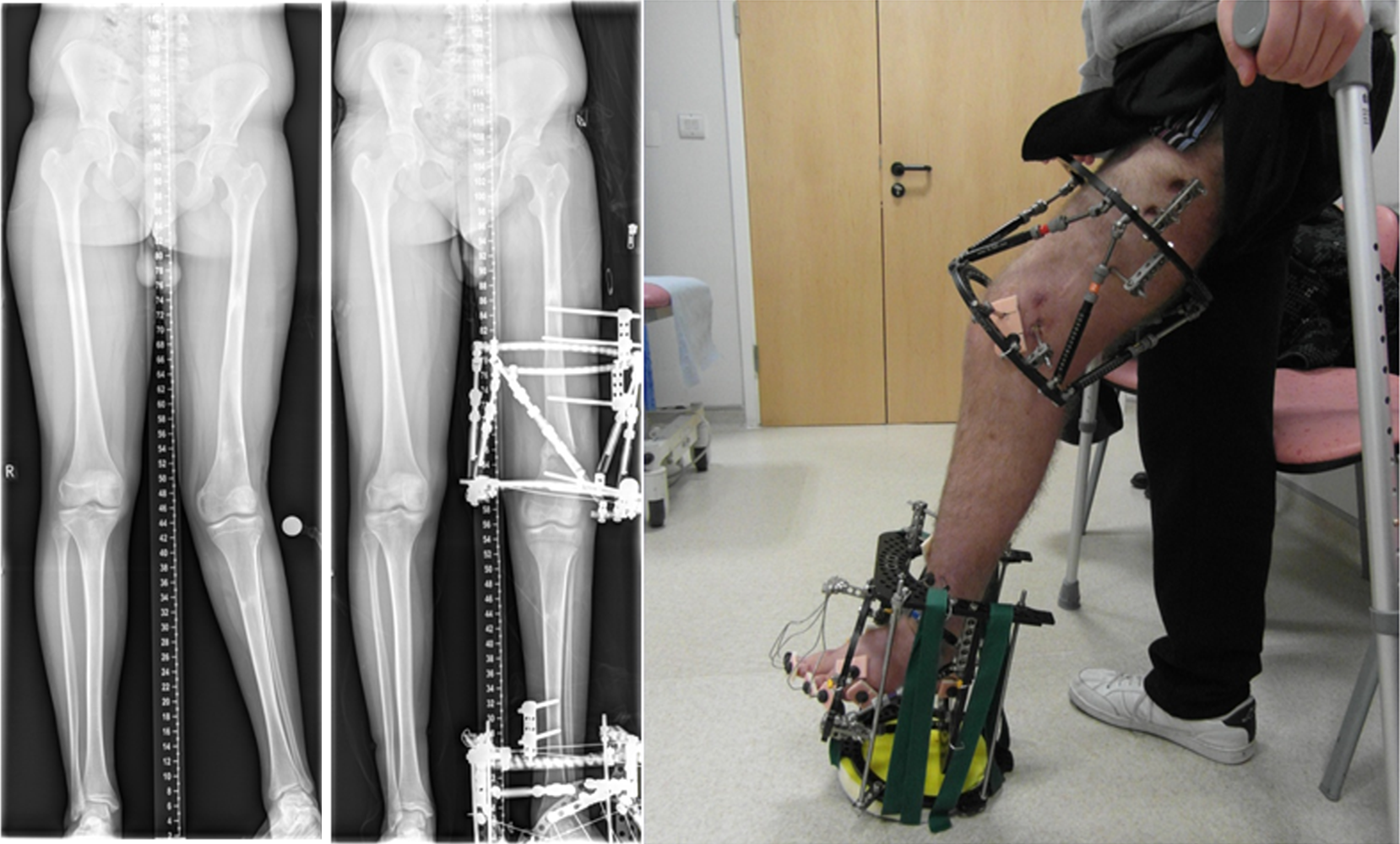1. Acute correction
Mild to moderate deformities can be corrected acutely and then stabilised either internally or using an external fixator. Generally, deformities more than 30° carry a risk of neurovascular injury and compartment syndrome and acute correction should be avoided.
Acute correction can be stabilised either by using plates and screws or IM nail.

Acute deformity correction using an intramedullary road.

Acute deformity correction using a plate.
Plates and screws:
Advantages
Ideally suited for peri-articular deformities where external fixation carries a risk of spreading infection into the joint and is also likely to cause stiffness.
Disadvantages
Generally more invasive.
Intramedullary nail:
Advantages
Minimally invasive techniques, percutaneous osteotomy. Ideally suited for diaphyseal and rotational deformities.
Disadvantages
Osteotomy rule 1 applicable- as very limited scope for correction with translation.
2. Gradual correction
This is a technique to inhibit growth in one side of the physis to correct the deformity. Inhibition of growth can be temporary or permanent. Older techniques using Phemister bone block and drill epiphysiodesis can only be used towards the end of growth. Temporary epiphysiodesis can be done using staples and 8 plates and are particularly useful in younger patients.
- Temporary: 8 plates, Staples
- Permanent: Drill hemiepiphysiodesis, Phemister bone block technique.
Gradual deformity correction using 8 plates.
b) Distraction osteogenesis
This utilises Ilizarov’s principles to correct deformities using external fixators. These can be summarised as:
- stable construct
- low energy osteotomy (preservation of blood supply)
- latency period of 5 to 7 days
- rate and rhythm of 1 mm distraction per day in four divided dose
External fixators used for distraction osteogenesis can be:
1. Mono-lateral fixator
Advantages
Patient comfort, causes minimal interference with joint range of motion
Disadvantages
Often rotational deformities are corrected acutely at the time surgery. Generally less margin of error and has less maneuverability as compared circular fixator.

Gradual deformity correction using monolateral external fixator.
2. Circular fixator
These are versatile deformity correction tools and all aspects of deformity can be corrected gradually with this fixator. Broadly classified into 2 types - the traditional Ilizarov type fixator and hexapod fixator. Figure 1.9.10
Advantages
All aspects of deformity can be corrected gradually. It is by mechanically more stable.
Disadvantages
Fine wire fixation around the joints can cause patient discomfort, joint stiffness and are prone for infection. Newer techniques of using half pins can give these fixators advantages of a mono lateral fixator with the versatility of the circular fixator.

Gradual deformity correction using circular frame.
Osteotomy rules
In order to correct a deformity, bone is divided (osteotomy). Careful planning of the osteotomy and the hinge where the bone will be rotated around is vital for good correction. The followings are useful rules:
Rule 1: Osteotomy should pass through the transverse bisector line. If the hinge is placed on the convex side, opening wedge osteotomy occurs. If on the concave side, closing wedge osteotomy. If at center, half closing and half opening osteotomies (neutral wedge).
Rule 2: If the osteotomy is done at a different level than the Center Of Rotational of Angulation (CORA), then translation occurs.
Rule 3: If osteotomy is done at a different level than CORA but hinge placed at osteotomy site, mechanical axis becomes parallel but anatomical axis becomes zigzag.